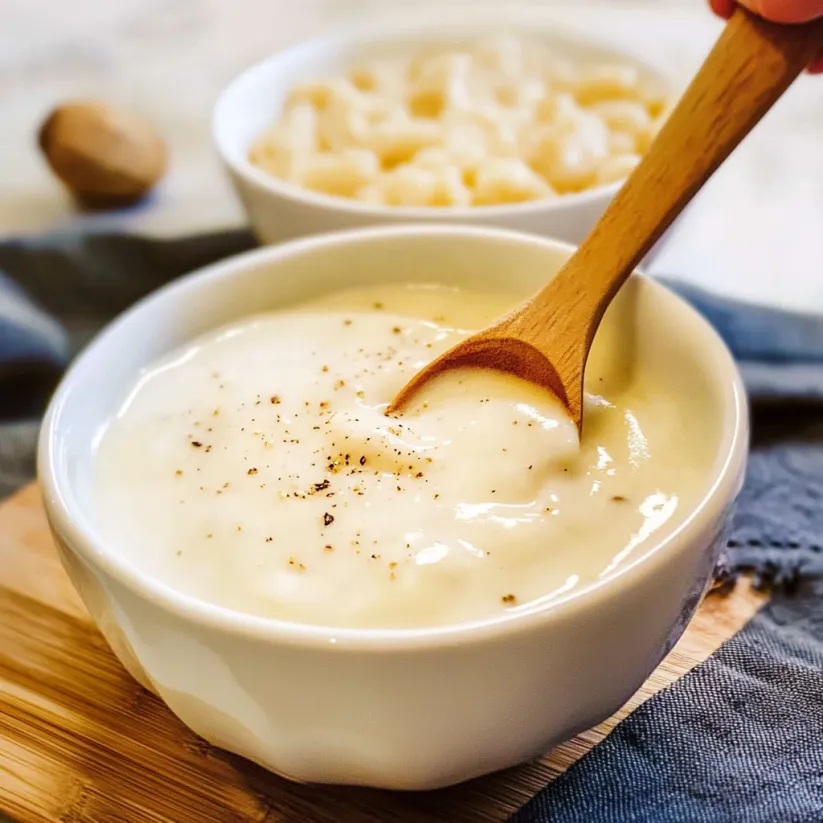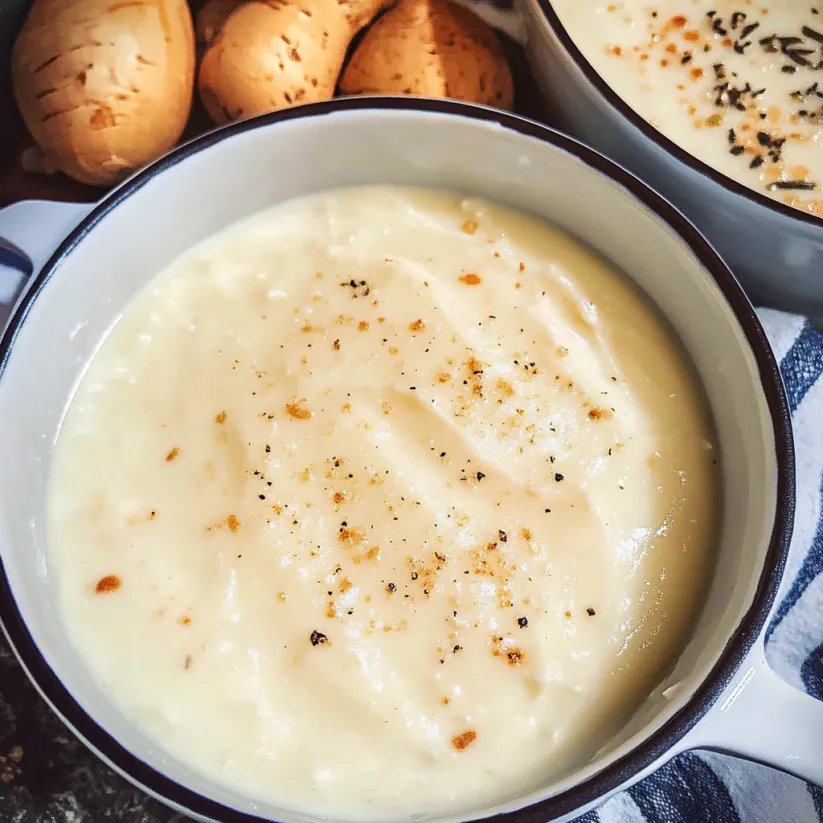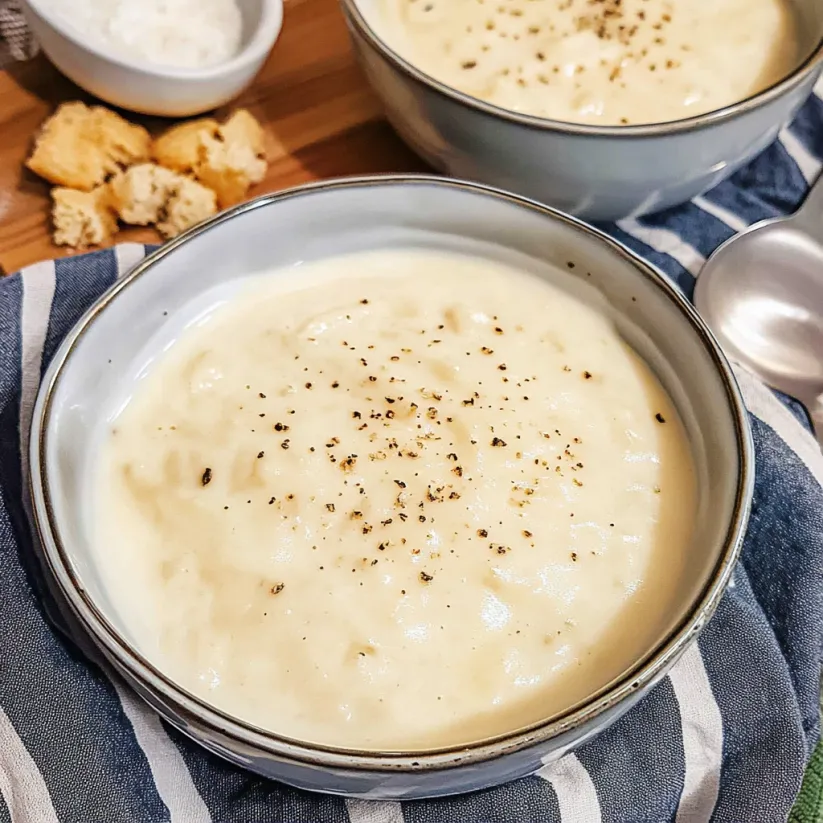 Save Pin
Save Pin
This creamy Bechamel sauce recipe has been my kitchen secret weapon for years. It's the foundation for countless dishes in my home, from lasagna to creamy vegetable gratins, and takes just minutes to prepare with ingredients I always have on hand.
I first learned this technique from my grandmother, who used it religiously in her signature mac and cheese. Now my own children recognize the familiar whisk-whisk sound as a sign something delicious is coming to the table.
Ingredients
- Butter Makes the foundation of your roux and provides richness. Use unsalted to control the salt level
- All purpose flour Creates the thickening agent when combined with butter. Always measure precisely for consistent results
- Milk Gives the sauce its creamy body. Whole milk creates the richest result but 2% works well too
- Nutmeg The secret ingredient that elevates bechamel from good to great. Always use freshly grated if possible
- Salt Enhances all the flavors. Start with the recipe amount and adjust to your taste
Step-by-Step Instructions
- Create the Roux
- Melt butter completely in a saucepan over medium heat until it starts to bubble slightly but not brown. Sprinkle in flour and whisk continuously and vigorously. Continue whisking for 2-3 minutes until the mixture smells slightly nutty and takes on a light golden color. This cooking time is crucial as it removes the raw flour taste.
- Add Liquids and Seasonings
- Pour in the milk gradually while whisking constantly to prevent lumps from forming. Add nutmeg and salt, continuing to whisk. Make sure to get into the corners of the pan where lumps like to hide.
- Thicken the Sauce
- Cook for approximately 5 minutes, whisking frequently. The sauce will gradually thicken to coat the back of a spoon. Remove from heat when it reaches your desired consistency, remembering it will thicken slightly more as it cools.
 Save Pin
Save Pin
My favorite thing about bechamel is its chameleon-like ability to transform into whatever you need. I once saved a dry turkey by creating a luxurious sauce with this recipe plus some herbs. My family now requests the sauce more than the turkey itself at holiday gatherings.
Perfect Consistency Guide
Achieving the right thickness for your bechamel depends entirely on its intended use. For a sauce to drizzle over vegetables, cook it less time for a thinner consistency. For a binding agent in dishes like lasagna, continue cooking until it's thick enough to coat the back of a spoon and when you run your finger through it, the line holds. The sauce will continue to thicken as it cools, so remove it from heat slightly before it reaches your desired consistency.
Troubleshooting Common Issues
Lumpy sauce usually happens when the milk is added too quickly or the heat is too high. If you end up with lumps, strain the sauce through a fine mesh sieve or blend it with an immersion blender. To prevent lumps, make sure your milk is at room temperature before adding it, and whisk constantly as you pour it in a slow, steady stream.
Flavor Variations
Transform this basic bechamel into numerous variations by adding different ingredients. Stir in grated parmesan and a pinch of cayenne for a mornay sauce perfect for mac and cheese. Add sautéed mushrooms and garlic for a delicious pasta sauce. Infuse the milk with bay leaves, onion, and cloves before making the sauce for a more complex flavor profile. I particularly love adding a tablespoon of dijon mustard and fresh herbs when using it for a vegetable gratin.
 Save Pin
Save Pin
Commonly Asked Questions
- → How do I prevent lumps in my bechamel sauce?
To prevent lumps, continuously whisk the flour and butter mixture (roux) for 2-3 minutes before adding any milk. When adding milk, pour it in gradually while whisking constantly. If lumps do form, continue whisking vigorously or use an immersion blender as a last resort to smooth out the sauce.
- → Can I make bechamel sauce ahead of time?
Yes! Bechamel sauce can be made 4-5 days in advance and stored in the refrigerator. The key is to place plastic wrap directly on the surface of the sauce before refrigerating to prevent skin formation and slow oxidation. Reheat gently on low heat, whisking occasionally to restore its smooth consistency.
- → What dishes can I use bechamel sauce in?
Bechamel is incredibly versatile and can be used in lasagna, gratins, croque monsieur/madame sandwiches, creamed vegetables, mac and cheese, moussaka, and as a base for other sauces like Mornay (add cheese) or soubise (add sautéed onions). It adds creaminess and richness to almost any savory dish.
- → Can I make bechamel sauce dairy-free?
Yes, you can substitute the butter with plant-based butter or oil, and replace the milk with unsweetened plant-based alternatives like almond, oat, or soy milk. The technique remains the same, though the flavor will vary slightly depending on your chosen substitutes.
- → Why is my bechamel sauce too thick or too thin?
The consistency depends on the flour-to-liquid ratio. If too thick, add more milk gradually while whisking until desired consistency is reached. If too thin, continue cooking to reduce it further, or make a small amount of additional roux in a separate pan and whisk it into your sauce.
- → Can I freeze bechamel sauce?
While possible, freezing isn't ideal as the sauce may separate when thawed. If you must freeze it, do so in an airtight container for up to 1 month. When ready to use, thaw in the refrigerator overnight, then reheat slowly over low heat while whisking vigorously to recombine any separated elements.
